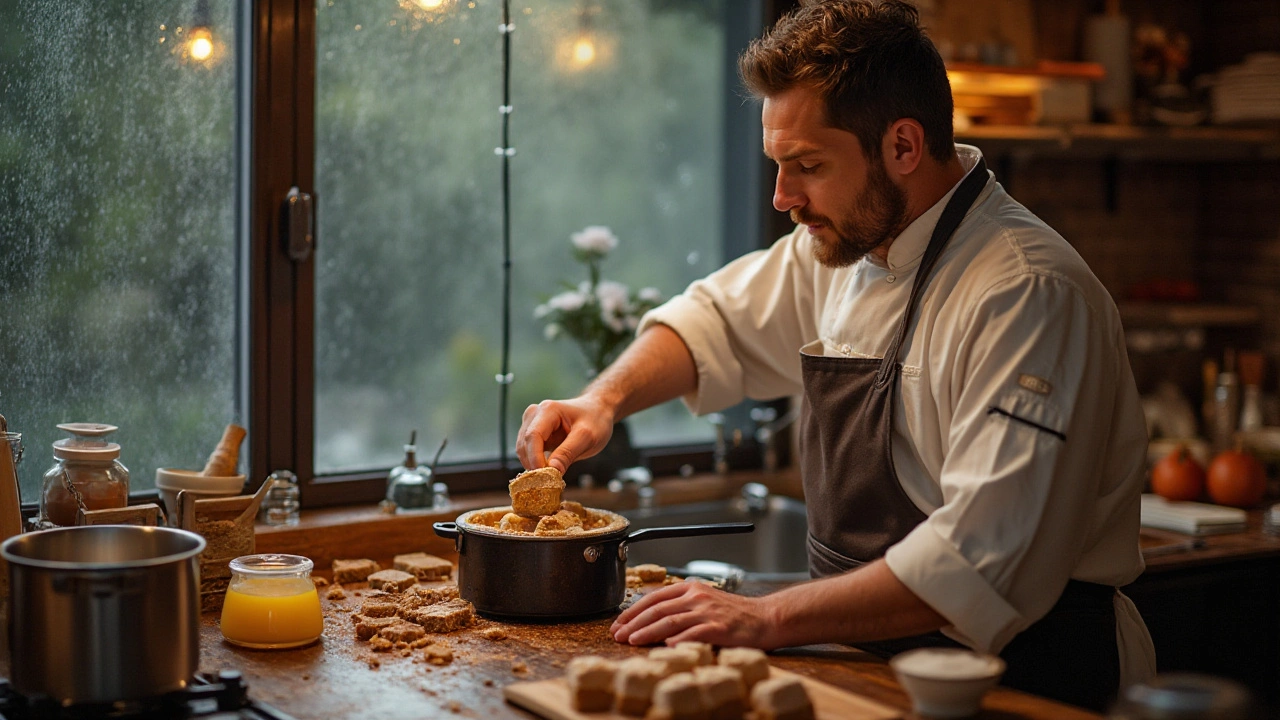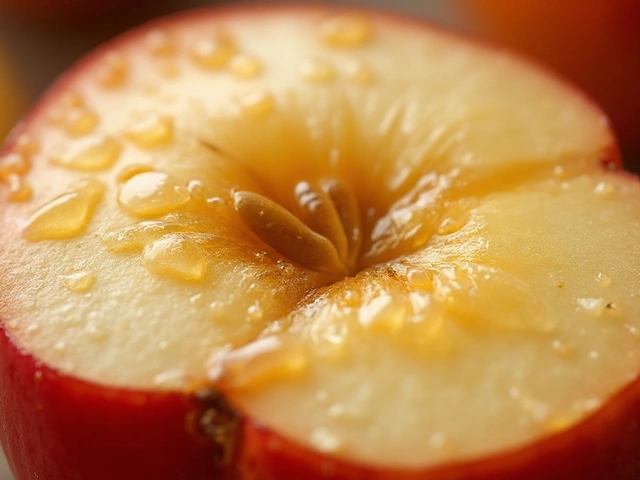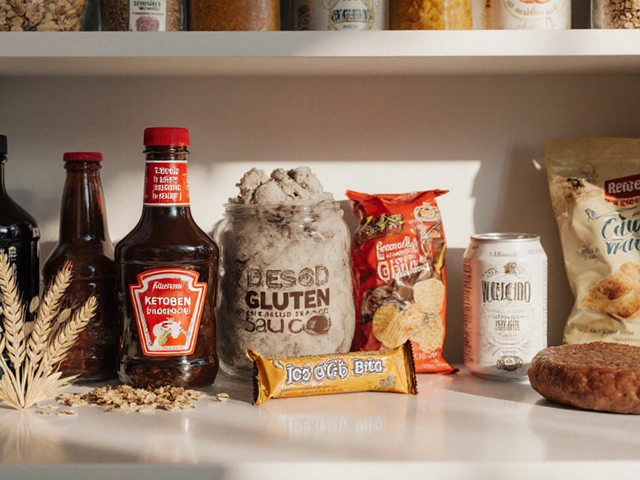
Making fudge has a reputation for being a little mysterious. If you've ever tried your hand at this confectionery classic, you may have heard the age-old advice: never make fudge when it's raining outside. The reason behind this peculiar guidance is more scientific than superstitious.
Humidity can play a mischievous role in the alchemy of fudge creation. The moisture in the air during rainy weather can wreak havoc on how sugar crystals form, leading to a final product that's gritty and less than delightful. Understanding the delicate balance involved in creating that perfect creamy texture can save your fudge from ruin, rain or shine.
- The Science Behind Fudge Making
- How Humidity Affects Sugar Crystallization
- Tips for Making Fudge in Humid Weather
- Alternatives to Traditional Fudge Recipes
The Science Behind Fudge Making
At its heart, making fudge is a delicious chemistry experiment. To understand this delightful process, you need to start with the central ingredient: sugar. Sugar doesn't just dissolve; it crystallizes, which is a critical step in the creation of fudge. When sugar is heated with butter and milk, it first forms a syrup. As this syrup cools, the sugar molecules want to return to their solid form, tiny crystals that determine the final texture of your fudge.
The trick to smooth fudge is controlling these crystals. If they form too early or become too large, you'll end up with a grainy texture. It's why recipes often instruct you to let the mixture cool undisturbed to around 110 degrees Fahrenheit before stirring vigorously. This process encourages smaller, more uniform crystals, leading to that creamy consistency we all love.
"Perfect fudge comes from patience and precision, not magic," says renowned pastry chef Claire Saffitz. "Understanding the science can elevate this sweet treat to new heights."
Humidity plays an unexpected role here. Water from the air can integrate into your molten mixture, affecting the sugar concentration. As a result, the sugar takes longer to crystallize, increasing the chances of a gritty texture if not carefully managed. This is why many seasoned chefs caution against making fudge on a rainy day, though some stubbornly dance through their kitchens with a wooden spoon anyway.
Temperature and Timing: Keys to Perfection
Temperature is just as critical as the ingredients in your fudge recipe. Many cooks rely on a candy thermometer to ensure precision. Heating the mixture to a precise point, often 234 to 240 degrees Fahrenheit, is not just a guideline—it's an absolute. This is the soft-ball stage, where the sugar syrup can form a pliable ball when dropped into cold water but will flatten out upon removal. Achieving this ensures the fudge won't be too soft or too hard.
- Use a deep, heavy saucepan to prevent overboiling and ensure even heat distribution.
- Despite the temptation, do not stir the mixture as it heats to avoid rogue crystals forming too early.
- If you're brave enough to attempt fudge on a damp day, slightly increase the cooking time or check consistency by the cold-water method.
Getting the science of fudge making right involves understanding these processes and taking the time needed to respect each step. Luckily, for all its exacting nature, making fudge also rewards with a sweet indulgence worthy of the effort and patience. Next rainy day, perhaps it's time for a new approach armed with this science-backed knowledge.

How Humidity Affects Sugar Crystallization
Picture this: you're in the kitchen with all your ingredients measured just right, the sunlight teasing through the window, until a sudden cloudburst ushers an unexpected shower. It might just seem like another day, but if you're making fudge, that uninvited rain could mean trouble. Humidity, often an unconsidered player in our culinary adventures, can transform your delightful fudge recipe attempts into a sticky situation. To create the creamy, smooth fudge that dreams are made of, achieving the right sugar crystallization is imperative. This process requires precision, and as trivial as it sounds, the moisture levels in the air can have a drastic effect on your fudge's texture.
Sugar crystallization is a choreographed dance of tiny molecules. It relies on carefully reaching a specific sugar concentration and allowing it to cool in just the right way. But with increased humidity — the sneaky kind that can crash even the sunniest gatherings — extra water gets into the mix. Water meddles by causing the sugar molecules to behave like unruly guests, leading to the formation of crystals that are too large. These oversized crystals disrupt the silky consistency, leaving you with a grainy texture that disheartens even seasoned sweet-makers. If you're pondering why even the most experienced folks caution against making fudge recipes during damp spells, this is it.
Weather plays a big role in the chemistry of cooking. Experienced chefs, such as those interviewed in culinary magazines, note that humidity can affect various processes, but it is especially critical when dealing with candies. As Betty Crocker says, "Every confectioner's greatest challenge is controlling the uncontrollable - the moisture in the air." It's no wonder they've mastered tricks to sidestep humidity's hijinks. You could fight back by using a dehumidifier in your cooking space, or opt for trusty air conditioning to keep the atmosphere dry and friendly for your sugar-making. Becoming friends with your kitchen thermometer is a must, as understanding how your syrup behaves at different temperatures becomes your best strategy against grainy blunders.
It's worth exploring concepts like supersaturation, which is key to understanding how weather interplays with sugar's nature. In perfect conditions, your sugar solution should start to cool without disturbance, leading to the creation of small, uniform crystals that lend fudge its melt-in-the-mouth feel. But, any hint of moisture can delay the process, causing slow crystallization, which then solidifies in a less-than-ideal fashion. Think of it as musical chairs in which too many participants stick around, resulting in a disjointed melody for your taste buds. The good news? Most fudge failures are fixable—often it's simply a matter of remelting the mix and adding a touch more sugar while cooling economically.

Tips for Making Fudge in Humid Weather
The task of making fudge when the air is sticky with humidity can be daunting but certainly not impossible. Understanding the influence of humidity on the fudge-making process is crucial. The moisture can cause sugar to dissolve differently, leading to the formation of larger crystals and a grainy texture in your fudge. This is why controlling the environment and relying on a few handy tricks can make all the difference. One trick is to increase the cooking time ever so slightly. Doing so helps to eliminate some of the excess moisture naturally present in the air on those gloomy, rainy days. Consider also using a candy thermometer to gauge your mixture's temperature accurately, aiming for that sweet soft-ball stage between 235 to 245°F (113 to 118°C), which is critical.
Another practical tip includes making small adjustments to your ingredients. You might find it useful to add a little cream of tartar or corn syrup to your recipe. These ingredients play a smart role by preventing sugar crystals from forming prematurely. A dash of salt can also help balance the sweetness and stabilize the structure by strengthening the gel network in the fudge. It's akin to baking a cake with precision measurements; every tiny element counts. Employing these techniques, you can achieve creamy, smooth fudge even when the clouds are hanging heavy.
Moreover, don't underestimate the power of airflow control in your kitchen. If your space allows, shut the windows and run a dehumidifier to minimize the ambient moisture level. This small adjustment in your kitchen environment can influence how your fudge recipe sets. As much as it sounds like a minor detail, it filters out excess humidity and gives you a more controlled setting to perfect your confection. You could also execute a double-boiler method to gently heat your mixture, ensuring an even and slow melt without reaching dangerously high temperatures, as these can cause your fudge to become too tough to manage.
According to the science-based cooking experts at Serious Eats, "Humidity can thwart even the most diligent candymakers." By keeping this wisdom in mind and taking proactive measures, you can tackle wet weather fudge crafting head-on.Therefore, remember, just because the weather isn't ideal doesn't mean you can't indulge in experiments and improve your technique.
Lastly, if all else fails, and the haze continues to persistently jeopardize your candy-making adventure, consider alternative recipes that are less sensitive to humidity. Adapt fudge recipes that don't require precise candy-making skills, like those that use marshmallow fluff or condensed milk. These variations embrace the chaotic weather by providing more consistency in texture and flavor. On the bright side, these alternatives offer distinct flavors and variations, allowing a fresh spin on the traditional method of making fudge, and thus expanding your candy-making repertoire.

Alternatives to Traditional Fudge Recipes
If the weather is conspiring against your desire to whip up a batch of classic fudge, there are numerous alternatives that can satisfy your sweet tooth without requiring you to engage in a battle with atmospheric conditions. Exploring these alternatives can be a fun exercise, offering you new flavors and textures that traditional fudge may not provide. One of the easiest substitutes is microwave fudge, which sidesteps the tricky boiling and cooling processes by utilizing the convenience of modern technology. With this method, all it takes is a few minutes in the microwave, and you've got yourself a treat with minimal fuss. Microwave fudge recipes often rely on sweetened condensed milk and chocolate chips, which simplifies the ingredient list and reduces the chance of error.
Another inventive approach is the no-cook fudge, which is perfect if you're feeling less like spending time at the stove and more like simply mixing and chilling. These recipes often feature bases such as nut butters or coconut oil, combined with cacao powder and natural sweeteners like honey or maple syrup. The beauty of no-cook fudge is its versatility; you can adjust textures and flavors to your personal preference, adding nuts, dried fruits, or a sprinkle of sea salt for an extra touch. The absence of heat in the preparation preserves the original flavors of the ingredients, which means you're getting a fresh taste with every bite.
"Fudge doesn't have to confine itself to the traditional methods and ingredients," suggests renowned chocolatier Ruth Kennett, "There are endless possibilities to experiment with, from vegan-friendly bases to unique flavor combinations."
For those committed to maintaining the classic fudge experience but seeking an alternative method, using a candy thermometer can save the day on humid occasions. This tool ensures your sugar solutions reach the precise temperature, taking some of the guesswork out of the process. It's particularly handy for experimenting with traditional fudge recipes when the weather isn't in your favor. Don't forget to explore flavor variations, where you can still use the foundational ingredients of sugar, butter, and milk, but incorporate elements like espresso, chili, or lemon zest to liven up the classic flavors. This not only diversifies your options but also challenges the palate with unexpected pairings.
Finally, exploring international fudge varieties can add a twist to your confectionery exploration. Indian barfi, for example, is a delightful cousin of fudge, often made with condensed milk and ghee, and seasoned with cardamom or saffron for an exotic taste. There are even options such as Scotch tablet, a crumbly, rich treat from Scotland that's similar to fudge. This approach will not only satiate your craving but might also usher in a cultural culinary journey that brightens up any rainy day. These alternatives not only provide solutions for the fickle fudge weather wars but also offer new avenues to expand your confectionary repertoire.




